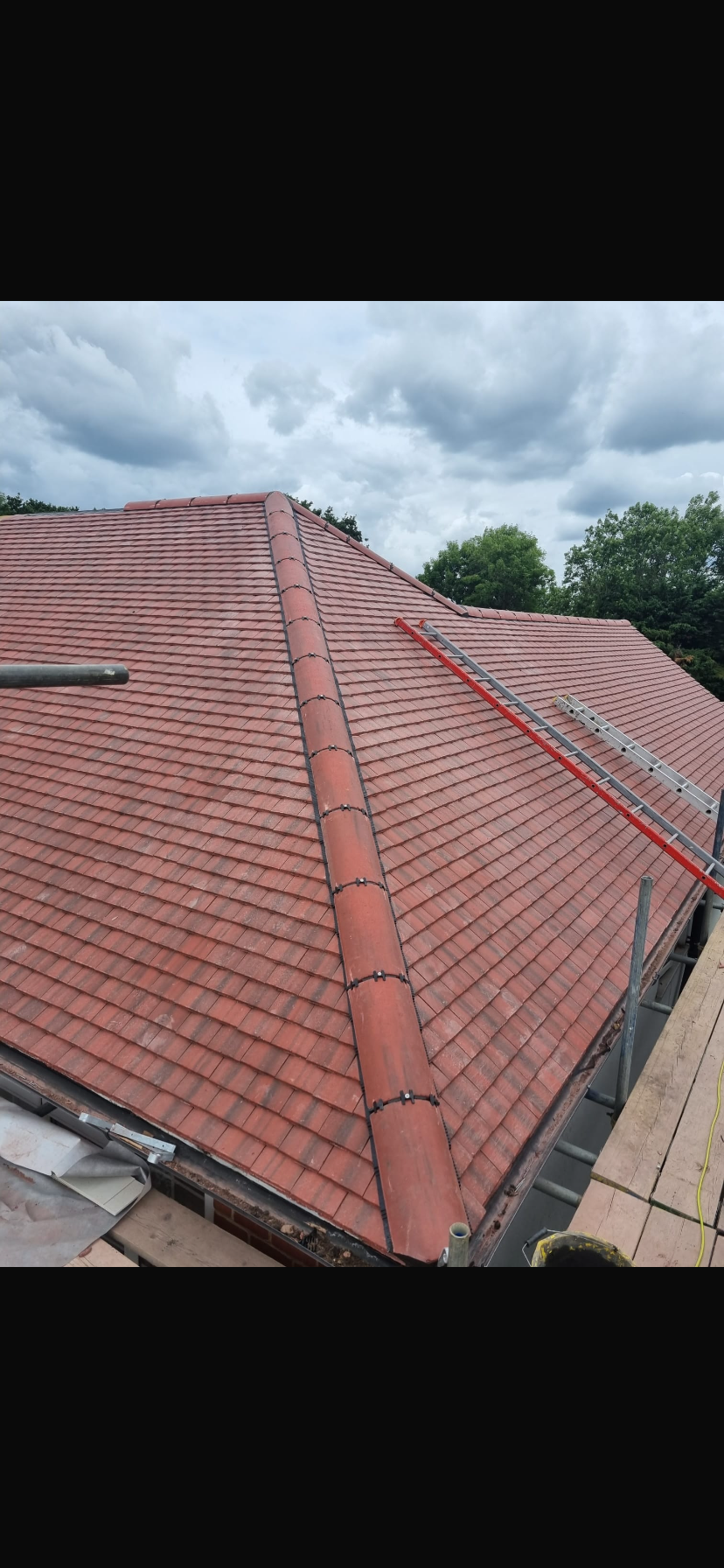+44 7853 968135
What is the golden rule for roof pitch?
The golden rule for roof pitch centres on achieving the perfect balance between structural integrity, weather protection, and aesthetic appeal. This fundamental principle states that your roof pitch must be steep enough to effectively shed water and snow whilst remaining shallow enough to withstand wind loads and maintain cost-effectiveness.
Understanding roof pitch requirements becomes crucial when planning any roofing project in the UK. The golden rule ensures your roof performs optimally across all weather conditions whilst complying with building regulations and maintaining long-term durability.
What is the Most Desirable Roof Pitch?
The most desirable roof pitch for UK properties typically ranges between 30 to 45 degrees, with 35 degrees often considered the sweet spot for most applications. This range provides excellent water runoff capabilities whilst maintaining structural efficiency and visual appeal that complements traditional British architecture.
Different roofing materials perform optimally at specific pitch ranges, making material selection a key factor in determining desirability. Clay tiles, for instance, work exceptionally well at pitches between 35-45 degrees, whilst slate can perform effectively at steeper angles up to 50 degrees, providing versatility for various architectural styles.
Need some Support with your Pitched Roofing? Speak with a member of our Professional Pitched Roofing Team here

Understanding Roof Pitch Requirements
Roof pitch requirements stem from multiple factors including local climate conditions, building regulations, and material specifications. The UK’s variable weather patterns, featuring heavy rainfall and occasional snow loads, necessitate careful consideration of minimum pitch requirements to prevent water penetration and structural damage.
Building regulations in England and Wales, as outlined by the UK Government’s Building Regulations Approved Document C, specify minimum pitch requirements for different roofing materials. These regulations ensure adequate weather protection whilst maintaining structural safety standards across all residential and commercial properties.
| Roofing Material | Minimum Pitch | Recommended Pitch | Maximum Practical Pitch |
|---|---|---|---|
| Clay Tiles | 22.5° | 35-40° | 50° |
| Concrete Tiles | 17.5° | 30-35° | 45° |
| Natural Slate | 25° | 35-45° | 60° |
| Metal Sheets | 5° | 15-25° | 30° |
| Thatch | 45° | 50-55° | 65° |
Why You Should Avoid a 45 Degree Roof
Avoiding a 45-degree roof pitch often makes practical and economic sense, despite this angle falling within acceptable ranges for many materials. The steep angle significantly increases material costs, labour complexity, and ongoing maintenance requirements whilst potentially creating wind uplift concerns in exposed locations.
A 45-degree pitch creates substantial internal volume that may remain unused, leading to increased heating costs and structural complexity. Additionally, this steep angle can appear visually overwhelming on smaller properties, disrupting the proportional balance that characterises well-designed British architecture and potentially affecting property value.
Finding the Ideal Slope for Your Roof
The ideal slope for your roof depends on balancing multiple considerations including local weather patterns, material choice, architectural style, and budget constraints. Properties in high-rainfall areas typically benefit from steeper pitches around 40-45 degrees, whilst those in sheltered locations can successfully utilise gentler slopes of 25-30 degrees.
Wind exposure plays a crucial role in slope determination, with properties in exposed locations requiring careful consideration of uplift forces that increase exponentially with pitch angle. The UK Government’s Planning Portal guidance provides valuable insights into planning considerations that influence optimal slope selection for different property types and locations.
| Property Type | Recommended Pitch Range | Key Considerations |
|---|---|---|
| Terraced Houses | 30-40° | Material compatibility, neighbour alignment |
| Detached Houses | 35-45° | Architectural style, wind exposure |
| Bungalows | 25-35° | Proportional balance, maintenance access |
| Extensions | Match existing | Building regulations, visual harmony |
| Outbuildings | 15-30° | Cost efficiency, weather protection |
Mastering the Golden Rule for Roof Pitch Selection
Successfully applying the golden rule for roof pitch requires understanding that the optimal angle represents a compromise between competing demands rather than a single perfect solution. Your chosen pitch must provide adequate weather protection whilst remaining cost-effective, structurally sound, and aesthetically appropriate for your property type and location.
The golden rule emphasises that pitch selection should prioritise long-term performance over short-term cost savings, recognising that inadequate pitch angles often lead to expensive remedial work and ongoing maintenance issues. Professional assessment becomes essential when dealing with complex roof shapes, multiple materials, or properties in challenging environments where standard guidelines may require modification.
Modern building techniques and improved materials have expanded the viable pitch range for many applications, allowing greater flexibility in design whilst maintaining the fundamental principles of the golden rule. However, this flexibility must be balanced against proven performance standards and regulatory requirements to ensure optimal long-term results.
Key considerations for implementing the golden rule include:
Need Help with Pitched Roofs? Talk to one of our Professional Pitched RoofsExperts today!
What is the Golden Rule for Roof Pitch: Frequently Asked Questions
UK building regulations determine minimum roof pitch based on roofing material specifications and local weather exposure conditions. The regulations ensure adequate weather protection whilst maintaining structural safety standards across all property types.
Roof pitch directly impacts insurance premiums and warranty coverage, with inadequate pitches potentially voiding coverage due to increased water damage risks. Insurers typically require compliance with manufacturer specifications and building regulations to maintain policy validity.
Local climate significantly influences optimal roof pitch selection, with high-rainfall areas requiring steeper angles for effective water management whilst windy locations may benefit from moderate pitches to reduce uplift forces. Regional weather patterns should always inform pitch decisions alongside material considerations.
Roof pitch modifications on existing properties typically require planning permission and building regulation approval, particularly when changes affect the overall roof profile or exceed permitted development rights. Local planning authorities assess visual impact and structural implications before granting approval.
Roof pitch significantly affects property value through its influence on visual appeal, maintenance requirements, and long-term durability expectations. Properties with well-proportioned, appropriately pitched roofs typically command higher values and attract more buyer interest than those with problematic pitch angles.
Installing roofing materials below minimum pitch requirements typically results in water penetration, premature material failure, and warranty invalidation. Manufacturers specify minimum pitches based on extensive testing to ensure reliable performance under normal weather conditions.
Different roofing materials exhibit varying performance characteristics across pitch ranges, with natural slate excelling at steep angles whilst metal sheets perform effectively at shallow pitches. Material selection should align with desired pitch angles to optimise longevity and weather resistance according to Wikipedia’s comprehensive roof pitch guide.
Roof pitch choice influences costs through material quantities, labour complexity, structural requirements, and ongoing maintenance needs. Steeper pitches typically increase material costs and installation complexity whilst potentially reducing long-term maintenance requirements.
Wind exposure requires careful consideration when determining roof pitch, as steep angles create increased uplift forces that can compromise structural integrity in exposed locations. Professional wind load calculations may be necessary for properties in particularly exposed or elevated positions.
Roof pitch affects energy efficiency through its impact on internal volume, ventilation patterns, and solar heat gain characteristics. Steeper pitches create larger roof spaces that may require additional insulation whilst potentially providing better natural ventilation opportunities.
Planning restrictions in conservation areas often dictate specific pitch requirements to maintain architectural consistency and historical authenticity. Local conservation officers typically provide guidance on acceptable pitch ranges that preserve the area’s character whilst meeting modern performance standards.
Professional assessments should include structural calculations, wind load analysis, thermal performance evaluation, and planning compliance checks before finalising roof pitch decisions. Qualified professionals can identify potential issues and optimise design choices for specific site conditions.
Roof pitch directly affects gutter sizing and drainage system design, with steeper pitches creating faster water flow rates that require appropriately sized guttering and downpipes. Adequate drainage capacity becomes crucial for preventing overflow and water damage during heavy rainfall events.
Maintenance considerations should significantly influence roof pitch selection, with steeper angles creating access challenges and safety concerns whilst shallow pitches may require more frequent cleaning and inspection. Balance between performance requirements and practical maintenance needs ensures long-term cost-effectiveness.

